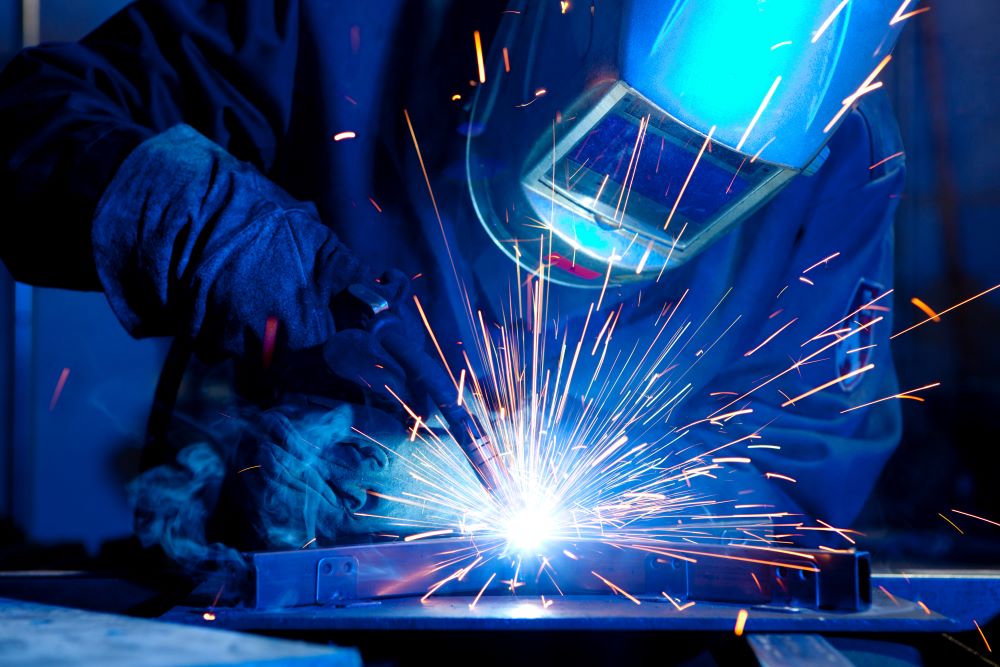Welding WPS: Usual Mistakes to Prevent and How to Correct Them
Welding WPS: Usual Mistakes to Prevent and How to Correct Them
Blog Article
The Ultimate Guide to Welding WPS Procedures: An Extensive Introduction for Welders
In the detailed world of welding, Welding Treatment Specifications (WPS) serve as the backbone of guaranteeing high quality, uniformity, and security in welding operations (welding WPS). As we delve right into the various components of a WPS and check out the ins and outs of qualification and certification, we will certainly discover the important duty these treatments play in the realm of welding.
Value of WPS Procedures
Comprehending the importance of Welding Procedure Specifications (WPS) procedures is crucial for making certain the quality and integrity of bonded frameworks. WPS procedures function as a roadmap for welders, laying out the required actions, criteria, and products needed to achieve a sound weld. By adhering to WPS guidelines, welders can make certain consistency in their job, bring about trusted and structurally audio welds.
Among the primary reasons WPS procedures are important is their duty in maintaining weld top quality and stability. Following the defined welding parameters and techniques detailed in the WPS helps protect against flaws such as porosity, cracking, or insufficient blend, which can compromise the toughness and durability of the weld. In addition, WPS treatments are essential for ensuring conformity with industry criteria and codes. By complying with well-known WPS standards, welders can demonstrate that their work fulfills the necessary requirements for safety and quality, giving assurance to customers, assessors, and governing bodies. Basically, the relevance of WPS treatments can not be overstated, as they are essential to attaining consistent, top notch welds that fulfill industry standards and specs.

Components of a WPS
A Welding Procedure Specification (WPS) usually comprises necessary components that detail the certain demands for executing a weld, ensuring consistency and top quality in the welding process. The key elements of a WPS include essential variables such as base steels, filler steels, interpass and preheat temperatures, welding procedures, shielding gases, welding placements, and post-weld warm therapy demands.
Base steels describe the materials being signed up with, while filler metals are made use of to fill the void between the base steels throughout welding. Preheat and interpass temperature levels are critical for managing the warmth input and stopping concerns like cracking or distortion. The welding process describes the details technique to be made use of, whether it's gas metal arc welding (GMAW), protected steel arc welding (SMAW), or an additional approach. Protecting gases safeguard the weld swimming pool from climatic contamination. Welding settings specify the orientations in which welding can be carried out. Post-weld warm therapy might be essential to alleviate stress and anxieties and improve the weld's residential properties. A complete understanding of these components is critical for developing a comprehensive and efficient WPS.

Certification and Certification
Having developed the crucial parts of a Welding Treatment Requirements (WPS), the next page emphasis now moves towards the critical elements of certification and accreditation in welding methods.

Certification, on the other hand, is the official acknowledgment of a welder's credentials by a pertinent accreditation body or company. Welding certifications are usually based upon the specific welding processes, materials, and settings a welder is certified to work with. Holding a valid welding accreditation shows that a welder satisfies industry standards and is proficient to perform welding tasks to the called for specifications.
Producing a WPS
To visit this web-site establish a Welding Treatment Spec (WPS) that satisfies market criteria, careful factor to consider of welding procedures, materials, and operational specifications is vital. The very first action in producing a WPS is to identify the welding process to be made use of, such as gas metal arc welding (GMAW) or protected steel arc welding (SMAW)

Applying and Keeping Track Of WPS
Upon wrapping up the comprehensive Welding Procedure Spec (WPS) that carefully information welding processes, products, functional parameters, and quality guarantee steps, the focus shifts to efficiently applying and keeping track of the established procedures. Execution entails making sure that all welders entailed in the job recognize with the WPS and follow it thoroughly throughout the welding process. This calls for supplying adequate training and supervision to ensure adherence to the defined procedures. Checking the WPS entails continuous oversight to verify that welding tasks straighten with the recorded specs. Examinations, testing, and top quality control procedures are necessary parts of the surveillance procedure to determine any problems or variances immediately. Normal audits and reviews of the welding procedures aid in maintaining uniformity and top quality throughout the task. Reliable implementation and monitoring of the WPS are crucial for guaranteeing the stability, strength, and security of the welded joints, inevitably adding to the general success of the welding job.
Conclusion
To conclude, understanding and following Welding Treatment Specifications (WPS) is important for welders to make certain quality, consistency, and safety and security in their job. By knowing the elements of a WPS, acquiring proper qualifications and qualifications, creating comprehensive procedures, and applying and monitoring them properly, welders can boost their skills and proficiency in welding practices. Complying with WPS treatments is vital for creating top notch welds and meeting market standards.
In the complex world of welding, Welding Procedure Specs (WPS) offer as the backbone of guaranteeing high quality, uniformity, and safety in welding procedures. The welding process describes the particular technique to be used, whether it's gas metal arc welding (GMAW), shielded metal arc welding (SMAW), or another method.To develop a Welding Procedure Requirements (WPS) that meets market requirements, cautious consideration of welding procedures, materials, and functional criteria is essential. The first action in developing a WPS is to identify the welding procedure to be utilized, such as gas metal arc welding (GMAW) or shielded steel arc welding (SMAW)Upon completing the extensive Welding Procedure Specification (WPS) that meticulously details welding processes, products, functional criteria, and quality guarantee procedures, the focus shifts to properly applying and keeping track of the established procedures.
Report this page